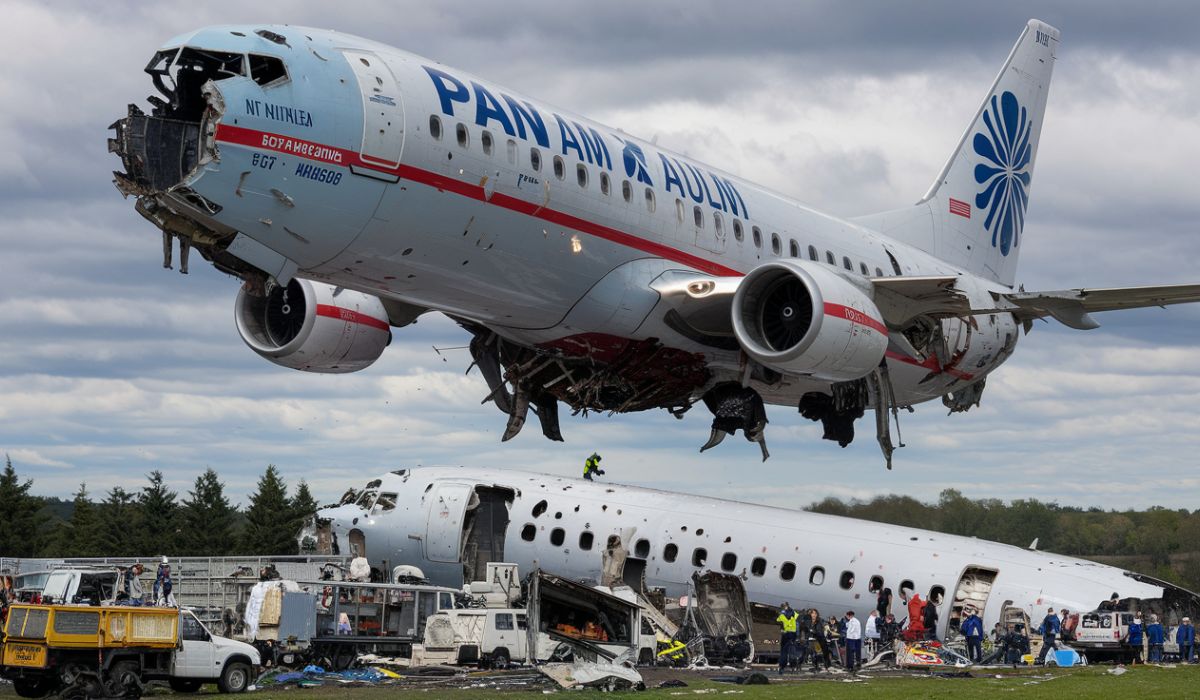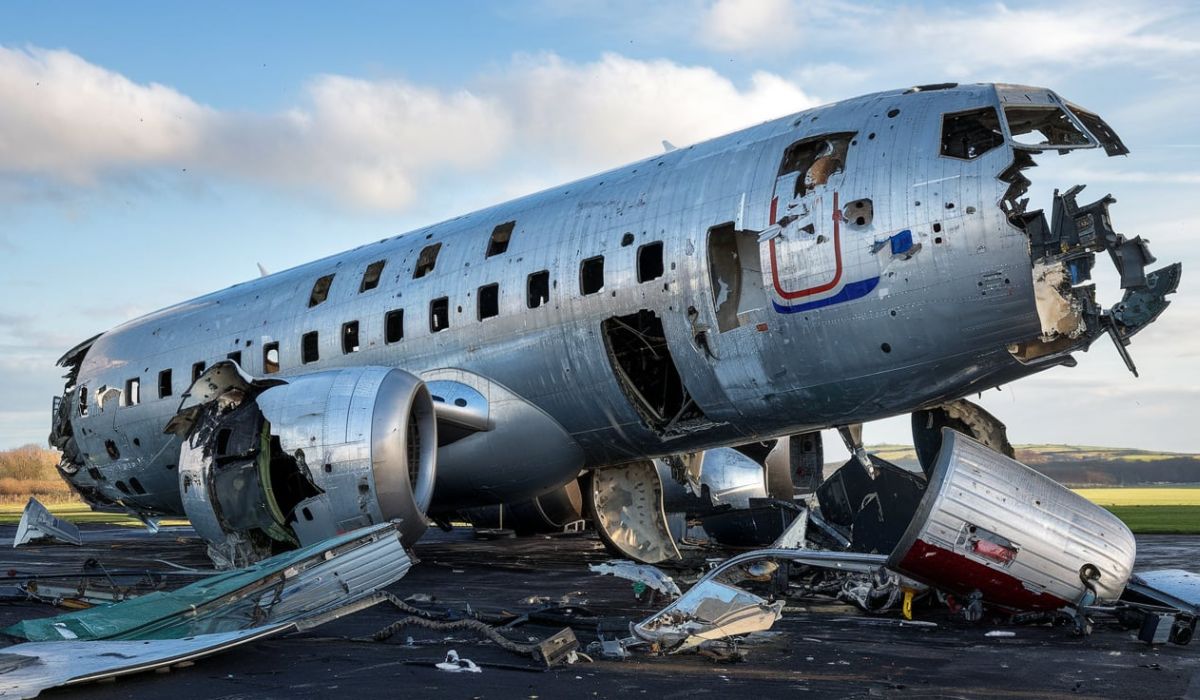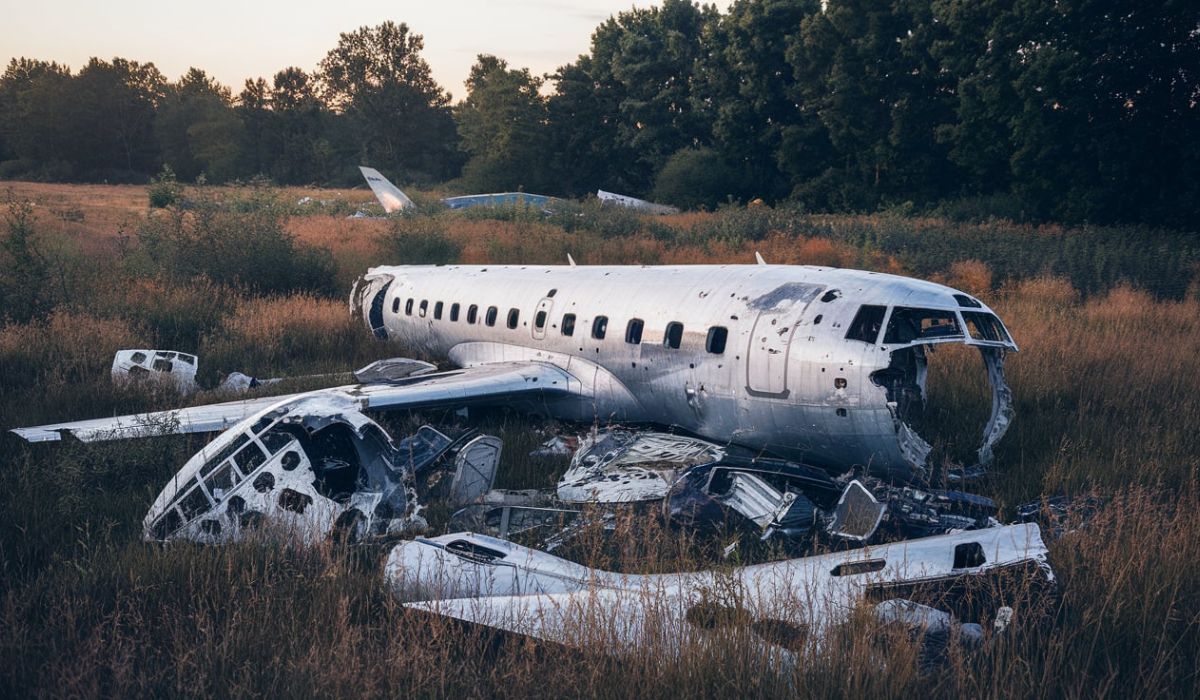On December 21, 1988, a devastating tragedy shook the world—Pan Am Flight 103, a transatlantic flight, was destroyed by a bomb, killing all 259 people aboard and 11 others on the ground in the Scottish town of Lockerbie. The bombing of Pan Am 103 remains one of the deadliest and most infamous acts of terrorism in aviation history, with its impact still resonating today. But what exactly happened on that fateful day? How did it affect aviation security? And what is the legacy of this horrific event?
In this article, we will delve into the details of Pan Am 103, explore the investigation, the aftermath, and how this tragedy changed the course of history. Let’s take a closer look at one of the darkest chapters in modern aviation.
The Tragic Day: What Happened on Pan Am 103?

Pan Am Flight 103 was en route from London Heathrow to John F. Kennedy International Airport in New York City when tragedy struck. At approximately 31,000 feet over the small Scottish town of Lockerbie, a bomb exploded in the cargo hold of the aircraft. The force of the blast caused the plane to break apart mid-air, with wreckage scattered over a large area.
The plane, a Boeing 747, had 243 passengers and 16 crew members on board, all of whom perished. Eleven residents of Lockerbie also lost their lives when debris from the explosion crashed onto the town. The world was left in shock and disbelief, and the bombing marked a dark chapter in the history of commercial aviation.
The Victims of the Tragedy: Remembering the Lives Lost
Among the 259 victims of the bombing were men, women, and children from all walks of life. The majority of passengers were Americans, but there were also individuals from the United Kingdom, France, Italy, and other countries. The victims included students, tourists, business professionals, and families returning home for the holidays.
One of the most heartbreaking aspects of the tragedy was the loss of so many innocent lives, including the 35 American students who were on their way home from studying abroad in Europe. The impact on their families and communities was profound, and many continue to remember the lives lost in this senseless act of violence.
The Lockerbie Disaster: The Aftermath and Immediate Response

The immediate aftermath of the bombing was chaotic and devastating. Emergency response teams in both Scotland and the United States worked tirelessly to locate and identify the wreckage. The search for survivors proved futile, as there were no survivors from the crash itself.
In the wake of the bombing, the UK government declared a national day of mourning, and the United States also observed a period of reflection. Pan Am, the airline that operated Flight 103, was faced with the daunting task of supporting the families of the victims, managing its own crisis, and working with authorities on the investigation.
The Investigation: Uncovering the Truth Behind the Attack
An extensive investigation was launched immediately following the attack, with officials from both the United Kingdom and the United States involved. The bombing of Pan Am 103 was initially believed to be the work of Libyan militants. After analyzing the wreckage and conducting interviews with witnesses, investigators found evidence pointing to a bomb placed in the aircraft’s cargo hold.
The investigation revealed that the bomb had been concealed in a suitcase, which was then checked onto the flight in Frankfurt, Germany. This was a crucial detail that would eventually lead to the identification of the individuals responsible for the bombing.
Who Was Responsible for Pan Am 103?
The investigation pointed to two Libyan nationals, Abdelbaset al-Megrahi and Lamin Khalifah Fhimah, as the primary suspects in the bombing. Al-Megrahi, who was a Libyan intelligence officer, was found to have purchased the suitcase containing the bomb, and Fhimah was suspected of being involved in the plot.
In 2001, after years of diplomatic negotiations and legal proceedings, al-Megrahi was convicted of the bombing of Pan Am 103 in a Scottish court. Fhimah was acquitted, but the trial had a significant impact on international relations, especially between Libya and the West. It wasn’t until years later that al-Megrahi was controversially released from prison on compassionate grounds, after being diagnosed with terminal cancer. His release sparked outrage, but it also raised questions about justice and accountability.
The Role of Terrorism in the 1980s: A Global Context

The bombing of Pan Am 103 was not an isolated incident. In the 1980s, terrorism was a growing global threat. The Cold War, ongoing conflicts in the Middle East, and the rise of militant groups led to an increase in terrorist attacks, many of which targeted civilians. The bombing of Pan Am Flight 103 was part of a broader pattern of violent acts fueled by political and ideological agendas.
The 1980s also saw the emergence of state-sponsored terrorism, with countries like Libya, Iran, and Iraq being accused of backing terrorist groups. The Lockerbie bombing was a grim reminder of the risks posed by international terrorism during this turbulent period.
The Impact of Pan Am 103 on Aviation Security
The devastating bombing of Pan Am 103 forever changed the landscape of aviation security. Before the tragedy, airport security procedures were relatively lax, with limited screening of passengers and baggage. The bombing highlighted the vulnerabilities in aviation security and led to major changes in how airports and airlines handled baggage screening and passenger safety.
In the aftermath of the bombing, the United States and other countries implemented stricter security measures. This included the introduction of more advanced baggage screening technology, increased checks for explosives, and enhanced intelligence sharing between countries. The event also led to the establishment of the International Civil Aviation Organization (ICAO), which set global standards for aviation security.
The Legal Battle: Trial and Justice for the Victims
The legal proceedings surrounding the bombing were long and complex. After years of diplomatic tensions and negotiations, the trial of Abdelbaset al-Megrahi took place in the Netherlands in 2000. The trial was historic, as it marked the first time a case involving a bombing of a civilian aircraft was heard in a court of law.
While al-Megrahi’s conviction provided a sense of closure for some, the controversy surrounding his release on compassionate grounds in 2009 left many feeling that justice had not been fully served. Families of the victims continue to demand accountability, and questions about the fairness of the trial and al-Megrahi’s release remain a point of contention.
Lockerbie Today: How the Town Remembers the Tragedy
The town of Lockerbie, where much of the wreckage of Pan Am 103 fell, has become a focal point for remembrance and reflection. Each year, there are memorial services to honor the victims, and the town has created a permanent memorial site. Lockerbie’s residents continue to cope with the emotional scars left by the tragedy, but they also show resilience in their efforts to preserve the memory of those who perished.
The memorial is not just for the victims of the bombing but also for the people of Lockerbie who witnessed the devastating event firsthand. The bombing had a lasting effect on the community, and their efforts to support the victims’ families have been widely recognized.
The Legacy of Pan Am 103: Changes to Global Aviation
The legacy of Pan Am 103 goes far beyond the immediate aftermath of the bombing. The tragedy sparked changes in global aviation, with improved security measures and an increased focus on preventing terrorism. The lessons learned from the bombing continue to influence how the aviation industry addresses security risks.
In addition to changes in airport security, the bombing also led to more stringent regulations on the transport of dangerous goods. International cooperation between countries has improved, with governments and security agencies working together to identify and thwart terrorist plots.
The Role of Technology and Intelligence in Preventing Future Attacks
Advancements in technology and intelligence have played a key role in preventing attacks like Pan Am 103 from happening again. Enhanced security screenings, better surveillance systems, and improved intelligence-sharing among countries have made air travel safer than ever before.
While it is impossible to eliminate all risks, the lessons learned from the bombing of Pan Am 103 have helped to create a more robust and resilient global aviation system.
Why Pan Am 103 Still Matters in Today’s World
Even though it has been decades since the bombing of Pan Am 103, its significance remains relevant. The tragedy serves as a reminder of the dangers of terrorism, the importance of aviation security, and the need for international cooperation in combating violence.
The legacy of Pan Am 103 continues to shape the way we think about terrorism and the steps we must take to protect our communities and loved ones from similar acts of violence in the future.
Conclusion: Reflecting on the Legacy of Pan Am 103
The bombing of Pan Am 103 was a horrific event that changed the course of history. It led to significant changes in aviation security, heightened awareness of terrorism, and a collective effort to prevent future tragedies. While the families of the victims still mourn their loss, their strength and resilience serve as a reminder that, even in the face of unimaginable tragedy, the human spirit endures.
FAQs
1. What caused the explosion on Pan Am 103?
The explosion was caused by a bomb placed in the aircraft’s cargo hold, which detonated while the plane was flying over Lockerbie, Scotland.
2. Who was responsible for the Pan Am 103 bombing?
The Libyan government was found to be responsible, with Abdelbaset al-Megrahi convicted for his role in the bombing.
3. What impact did the bombing of Pan Am 103 have on aviation security?
The bombing led to major improvements in aviation security, including stricter baggage screening and the introduction of new security technologies.
4. How did the town of Lockerbie respond to the bombing?
The town of Lockerbie has become a place of remembrance, with annual memorial services and a permanent memorial to honor the victims.
5. Why is Pan Am 103 still significant today?
The legacy of Pan Am 103 continues to influence aviation security, international cooperation, and the fight against terrorism. The tragedy serves as a reminder of the importance of vigilance and prevention.
For More Visit, rankshort
